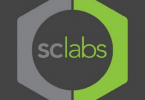
This narrative once seemed like the limit of the conversation, vocalizing all we knew about so-called “designer” synthetic drugs, or even plant-derived drugs like delta-9-tetrahydrocannabinol (THC), used with reckless abandon just for the experience – a youth gone wild.
There’s another, medicinal side to molecules like 3,4-methylenedioxymethamphetamine (MDMA aka ecstasy or molly) or ketamine (Special K), one that’s paralleled the progressive stories of cannabis, psilocybin [1], and lysergic acid diethylamide (LSD) [2].
A substance that alters the mind seems almost to forebode “Scheduling” by the Drug Enforcement Agency, who hawk the nonexistent therapeutic efficacy in molecules like LSD, cannabis, and MDMA. But it’s just an outright lie… and mindsets are changing.
Recently, I had the wonderful opportunity to speak with Dr. Roger McIntyre, practicing psychiatrist, Professor of Psychiatry and Pharmacology at the University of Toronto (UT), and CEO of Champignon Brands. The mission of McIntyre and his colleagues at Champignon is, in part, to try to prove that ketamine is a safe and effective treatment that works rapidly and reduces suicidality in depression. Dr. McIntyre is also especially interested in demonstrating that ketamine can improve function, getting people back to their usual role which has been a major limitation of conventional medications for depression.
Where the Status Quo Falters
“I was the head of the mood disorders department [at UT] for over 20 years,” began McIntyre. “There are tens of thousands of patients who have received traditional treatments for their mental health conditions. Many don’t respond to treatment. For others, the drugs just don’t work fast enough. They’re stuck in a cul-de-sac. They need a new line of sight.”
Depression is a complex disease, globally affecting more than 264,000,000 people. Clinical depression, however, isn’t feeling “down in the dumps” or “the blues.” It’s more severe, presenting symptoms like hopelessness, emptiness, anger, loss of interest in things, changes in sleep patterns, slowed thinking, feeling worthless, trouble concentrating, and/or frequent thoughts of suicide. Antidepressant medications like Prozac® or Efflexor® attempt to increase serotonin and norepinephrine, neurotransmitters involved with mood.
“Only a small percentage of people benefit completely from conventional treatments,” McIntyre explained. “Benefit can refer to two pathways: either the patients’ symptoms or functionality improve. Most treatments just don’t deliver a functional recovery.”
I Give You Ketamine
There is no consistent consensus amongst researchers regarding long-term deleterious effects of antidepressants [3], but if they are not working for many patients, the fact that the patient isn’t feeling better is damaging enough. And while we’ve been told for decades by the DEA that THC, mushrooms, LSD, and ecstasy are without known medicinal merit, researchers like McIntyre have swept, nay, pressure-washed aside the debris, revealing a different scene for some of these molecules.
In 2019, for example, the Food & Drug Administration (FDA) approved a nasal spray called Spravato (esketamine) for treatment-resistant depression. Spravato can be obtained at a certified doctor’s office or clinic. (Note: A quick read of the above link reveals that Spravato is not without side effects.) Also, there is a current clinical trial evaluating the potential of LSD for depression.
“The pharmacology of some of these substances kept with the view that these products might be effective, and rapidly effective, such that people could get their lives back,” McIntyre added.
“The drug I’ve worked most with, ketamine, is a primetime drug. It benefits sufferers of treatment-resistant depression. While many conventional treatments typically take 4 to 8 weeks to produce any results, ketamine can start working in 1 day.”
One day? One day. One day!
Nevertheless, we must still counterbalance expectations and excitement since we’re in early experimental stages with limited data on long-term ketamine treatment. For example, a 2018 clinical trial was concluded after just four weeks.
Finding Inner Meaning
“Ketamine also reduces suicidal ideation,” McIntyre expounded. “It can get people back to work and feeling meaningful. My patients are delighted.”
We discussed this perhaps overlooked side of mental illness. When people feel meaningless, it’s hard to want to step outside, merge into humanity, and actualize their potential in society. But existing, if not exactly living, still costs money, and therefore, many people end up on disability which also requires real money.
“This is a very expensive illness,” McIntyre said. “Ketamine provides benefit to an individual’s life and, as a result, it provides benefits from an economic perspective. That is, from a larger societal perspective but also it benefits the human capital of the individual affected by depression by increasing their overall functioning.”
The Period of Disbelief
So, this denounced, taboo club drug can really help heal the clinically depressed starting in 24 hours? It can help prevent suicide? Get people back into the workforce? Stimulate the economy? Provide meaning? Breathe in, breathe out. Repeat.
“All of these results felt at least too good to be true,” McIntyre admitted. “It was so compelling, it was startling. It was very bizarre and long overdue.”
As always, though, the mantra of more clinical research will illuminate the pros and cons of any proposed treatment.
Cracking the Mechanism Code
So, at this point, clinicians like Dr. McIntyre know that molecules like ketamine work. The next question to address is specifically how these molecules work in treating the conditions.
“That is the million-dollar question,” McIntyre replied. “We’re not yet sure what the mechanism or mechanisms is or are exactly, but we do have some leads.”
The thing is though, that not all psychedelics will behave identically. Ketamine, for example, targets our glutamate system. Glutamate is an activating neurotransmitter and neurotransmitters are chemicals that courier messages from one neuron to another. Glutamate binds with the N-methyl-D-aspartate (NMDA) receptor found in nerve cells. Excess glutamate and over-stimulation of the NMDA receptor have been implicated as playing roles in neurodegenerative diseases and psychiatric disorders. [4,5] Directly targeting the NMDA receptor with an antagonizing molecule like ketamine could provide the silver bullet for treatment-resistant depression.
And across the psychedelic realm, different molecules might all be labeled as psychedelics and yet act in very different ways.
“There’s no bumper sticker that will capture the mechanism of these molecules,” McIntyre added. “There are likely multiple mechanisms which may not be the same for different patients. Or the mechanism for a drug may not be the same when treating different conditions.”
It’s almost like the molecules know what they need to do for relieving a given impairing condition – to treat alcoholism, do this; for, depression, do that.
Other Psychedelics in the Lineup
Whereas ketamine might be a “big-league” drug for treating mental illness, Champignon Brands is also interested in psilocybin and MDMA.
“While we’re looking at synthesizing other derivatives of psilocybin, these are what I’d call the farm team, not ready for the big leagues,” McIntyre explained. “They’re still in development, but there’s strong science. The FDA has declared both as breakthrough drugs for post-traumatic stress disorder and psychotherapy.”
Natural Versus Synthesized
Ah, yes. There’s always the debate over natural molecules versus those synthesized in the lab.
“At this point,” McIntyre explained, “the source could be natural or synthetic. That’s still to be determined. We are a vertically-integrated company, however, with the molecular and pharmacologic capability to synthesize these molecules or obtain them through natural derivation either on our own, or in partnership with other organizations.”
The Future Means Human Trials
After all this molecular and rather miraculous eloquence, we must remember that these molecules are still Scheduled drugs that are illegal to be in one’s possession. The drugs, therefore, are provided to facilities that have achieved appropriate credentials and are adherent to best practices for medication security.
“These studies should only take place at highly credentialed places with strong academic interest, involvement, and engagement,” McIntyre added. “We need the utmost in fidelity with legal requirements and the scientific method, and there should be a rigorous, highly regulated environment required to ensure proper safety.”
McIntyre says that these legitimizing parameters should include safety concerns, the types of patients put into the studies, professionals to identify legitimate medical disorders, adherence to good manufacturing practices (GMP), and good clinical practice (GCP).
Champignon Brands is running preliminary studies on viable active pharmaceutical ingredients. Then, their projects will be taken through pre-clinical (animal) and clinical (human) trials. “Our lead molecules are ketamine derivatives and we are in the process of considering also psilocybin derivatives. The clinics we have are already providing ketamine,” McIntyre added. “We’re publishing in peer-reviewed journals and are expanding the number of clinics.”
“We’re also developing derivatives of ketamine and other psychedelic drugs to uncover better versions,” McIntyre continued. “Some enantiomers of ketamine may be more pharmacologically active and safer. It may be that ketamine combined with its enantiomers provide a kind of ensemble effect.”
“The bottom line is that we need to have more clinics to provide these treatments. Our ultimate mission is to save lives and give life back to peoples’ lives.”
From club drug to breakthrough treatment for clinical depression — even the most skeptical mind can understand the difference between dogmatic bunk and real data. Ketamine’s effectiveness may at first shock us, but perhaps ketamine and other psychedelics will trump orthodox medicine by providing faster, more effective ways for reclaiming our own minds.
References
- Nichols, D. “Psilocybin: From Ancient Magic to Modern Medicine,” The Journal of Antibiotics, (2020). https://doi.org/10.1038/s41429-020-0311-8. [journal impact factor = 2.668; times cited = N/A (Semantic Scholar)]
- Grinspoon, L. and Bakalar, J. Psychedelic Drugs Reconsidered, Basic Books, New York, 1979.
- Sharma, T. et al. “Suicidality and aggression during antidepressant treatment: systematic review and meta-analyses based on clinical study reports,” British Medical Journal, vol. 352, 2016, i65. [journal impact factor = 27.604; times cited = 161 (Semantic Scholar)]
- Ates-Alagoz, Z. and Adejare, A. “NMDA Receptor Antagonists for Treatment of Depression,” Pharmaceuticals (Basel), vol. 6, no. 4, 2013, pp. 480–499. [journal impact factor = 4.286; times cited = 35 (Semantic Scholar)]
- Iadarola, N. et al. “Ketamine and Other N-Methyl-D-Aspartate Receptor Antagonists in the Treatment of Depression: A Perspective Review,” Ther Adv Chronic Dis., vol. 6, no. 3, 2016, pp. 97–114. [journal impact factor = 4.257; times cited = 113 (Semantic Scholar)]








